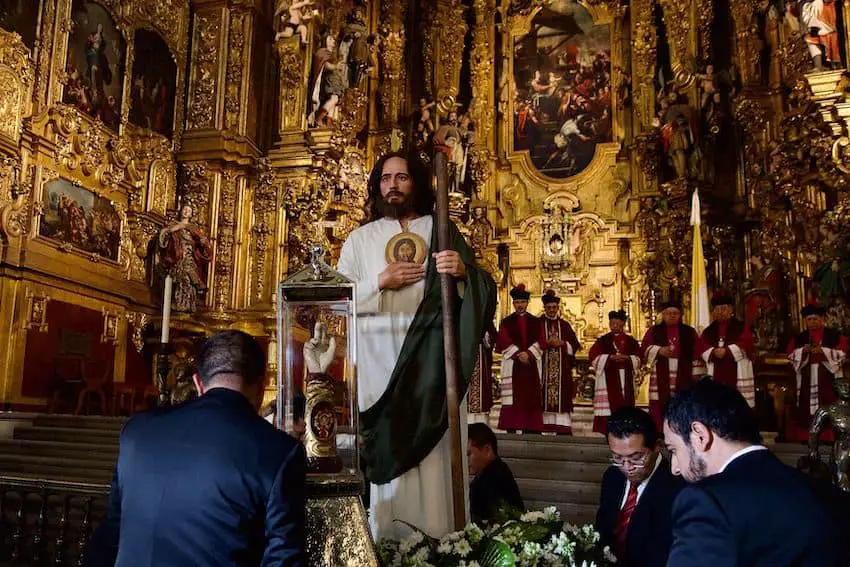A relic of St. Jude Thaddeus — an arm bone encased in an ornate reliquary — has arrived in Mexico City from Vatican City, following a nearly yearlong tour across the United States.
While on its journey authorized by the Vatican, the relic is a must-see for many Catholics, especially given Mexico’s deep-rooted devotion to St. Jude, the patron saint of impossible cases and lost causes.

(Andrea Murcia/Cuartoscuro)
One of Jesus’ 12 Apostles, St. Jude had the mission of bringing the Christian message to the world. In Mexico, he is celebrated with a feast and veneration every Oct. 28, drawing thousands of people to churches across the country, with many of them praying to him for help in desperate situations.
The relic of St. Jude, often referred to as “the hand of St. Jude,” will be displayed in various parts of Mexico through Aug. 29.
The tour began with a three-day stop at the Metropolitan Cathedral of Mexico City that ends on Wednesday, July 31. There, thousands of people lined up, many of them waiting for two hours or more under a hot sun.
“I think that those of us who are here are here because of the devotion and faith we have in St. Jude,” Ernesto Rosas told the newspaper El Universal while waiting in line. He said looking upon the saint’s hand would be a thrill, even if only for “a few seconds.”
One devotee leaving the church said, “I was able to see the hand for about 40 seconds, and that’s being generous. It was very fast, but it was really worth it.”
The arm bone relic, believed to be a fragment of St. Jude’s own remains, symbolizes the saint’s enduring presence and his role as a helper of the hopeless. It was separated from his skeleton centuries ago, placed into a silver reliquary, and preserved for many years in Armenia, Turkey and Turin, Italy.
In 1949, the Dominicans in Turin presented the relic to the Dominican Shrine of St. Jude Thaddeus in Chicago on the occasion of its 20th anniversary.
For the tour, it was placed in a wooden reliquary carved in the shape of an arm that is making a gesture of giving a blessing.

After its U.S. tour — which started last September in Illinois and went through 28 additional states before ending with two months throughout California — the relic received blessings for its Mexican journey during a special mass in St. Peter’s Basilica in Vatican City.
The relic arrived at the Mexico City International Airport on July 29, where hundreds of people were waiting near the customs office to see it. A delegation from the Mexican archdiocese was there to help place the relic in a white van with large windows that resembled a Popemobile.
The relic was then transported through the streets of Mexico City by motorcade, which included more than a dozen police motorcycles and a helicopter flying overhead for extra security.
The relic’s second stop in Mexico will be Aug. 1-2 at the Temple of San Hipólito in Mexico City. San Hipólito became one of the most important pilgrimage sites in the country for the Oct. 28 feast of St. Jude after an image of the saint was placed on the church’s main altar in 1982.
At many stops, church officials have prepared special events and masses to welcome the relic and accommodate the expected crowds.
After four additional stops in Mexico City through Aug. 11, the artifact will move on to México state, Tlaxcala, Puebla and other locations that have not yet been made public.
With reports from El Universal, La Jornada Maya, El Financiero and National Catholic Register
